World Famous Sree Padmanabhaswamy Temple Trivandrum
This is an article on the world famous temple Sree Anantha Padmanabha Swamy of Thiruvananthapuram. To know more about the temple, deity, idol, Sri Kovil (sanctum sanctorum), poojas (worships), offerings, festivals, timings & dress code, sub shrines, legends and history and construction please read further on.
Sree Anantha Padmanabha Swamy temple in Thiruvananthapuram City, the capital City of Kerala State in India is an old temple. This temple is one of the most important Vaishnava temples (Temples where the main deity is lord Vishnu or his incarnations or his different forms) in India. Among the Vaishnava temples 108 temples known as 108 Divya Desams (sthalams - holiest abodes) are most sacred. Sree Anantha Padmanabha Swamy temple is one of the 108. This temple is also important as the same is one of the seven Parasurama Kshetras (Temples consecrated by Lord Parasurama - one of the incarnations of Lord Vishnu). Parasurama was supposed to have brought up the land of Kerala from under the sea by throwing his maze as per the permission given by Varuna god (God of water). The temple is located in the east fort of Thiruvananthapuram. This temple is glorified in the Divya Prabhandhams (Holy Scriptures – literature). These Prabhandhams are early Tamil medieval literature by Alwar Saints (Vaishnava saints) between 6th to 9th centuries A D and the temple of Sri Ananthapadmanabhaswamy is glorified as one of the 13 Divya Desams of Malanadu (Kerala). That shows the temple was a very important worship center for Vaishnavas even in 6th Century. Though there is no direct reference in any other literatures older than the Prabhandhams, the temple is much older than 6th century. This is because this temple is referred in seven Puranas. The Puranas were this temple is referred are the Bhagavata Purana (a scripture containing the details of all the incarnations of Sri Mahavishnu), Brahma (details about Brahma) Purana, Brahmanda Purana (details about the various worlds), Skanda Purana (details of Karthykeya), Varaha Purana (details of Varaha incarnation), Padma Purana and Matsya (fish incarnation). However from the 8th century A D, the rulers of this area were from the Chera Dynasrty. The temple is considered as one of the 7 Parasurama temples (temples consecrated by Parasurama). In the Sree Kovil of this temple the lord Vishnu is in Ananthasayanam (Anantha = unending - without end; Sayanam (lying – reclining) posture with his head pointing towards south, facing east. He is not reclining, lying or sleeping but is in deep trance (yoga nidra – deep meditation). It is a form of keeping the mind empty or full concentration. The Lord's right hand hangs over a Shiva Linemen installed on the ground. The goddess Lakshmi (Sridevi) goddess of wealth or prosperity and Bhudevi goddess of the earth, the two consorts of the lord stand by his side in attendance to serve him. From the navel of the Lord a lotus is blooming. In the lotus the god Brahman (the creator) is seated. The Serpent Anantha is also shown with the face pointed inward indicating that the Anantha is also in deep trance like his lord. The lord is reclining on the coil of Sri Anantha. Anantha (also known as Adi Sesha) is also the name of the 7 hooded snake king (Serpent) which is resting in coiled form in such a way as to form a huge bed like format for the Lord to recline. The place of rest is supposed to be in the Milky Ocean. The deity of Thiruvananthapuram is representing this lord reclining on the serpent Anantha. According to legends lord Indra (Ruler of Devas – gods) Varuna (god of water) and Chandra Deva (Moon god) are believed to have worshiped the Sree Anantha Padmanabhaswamy. No abhishekam (washing) is done to this idol. Abhishekam is performed to another idol meant for the purpose. This arrangement is to prevent damage to the original idol of Salagramams and kadu sarkara yogam (a mixture of raw jaggery and herbs). The deity is worshiped with flowers. These worshiped flowers are removed using the feathers of peacocks again to prevent damage to the idol. It is said that the idol of Sree Ananthapadmanabhaswamy (Anantha Padmanabha Swamy) is made from 12,008 Salagramams (a special type of stones found only in the bed of river Gandhaki – a tributary of the River Ganges, in Nepal). Hence it goes without saying that the Salagramams are brought from Nepal. Just as the Lingam is associated with Lord Shiva, Salagramam is associated with Lord Vishnu. The then Nepal King sent, as per the request of the Travancore King, 25,000 Salagramams on elephants with the pomp and pageantry accompanied by solders and other public. Out of the 25,000 only 12008 are used with Navaratnams to make the idol with a compound made of Kadu Sarkara (a form of strong jaggery – vellam and ayurvedic herbs) as plaster. The Travancore kings surrendered their country and themselves to the Lord and were ruling the country of Travancore as the representative of Sri Padmanabha and were considering themselves as the Sri Padmanabha Dasa (Servant of lord). The Royal family and their subjects believe that the lord come in some disguise or other to their rescue whenever they are in trouble. The crown of the Lord sporting; the kundalams in the ears; the huge Salagramam mala (garland) adorning the chest; and the finely chiseled poonal (sacred thread) are all in gold. So are the various ornaments covering the chest and the right hand sporting a huge kankanam (bangle) shielding Lord Siva and the left hand holding a Kamalam (lotus) made of gold. The stalk of the Kamalam rising out of the nabhi (umbilicus) is also in splendid gold. The entire length of the Lord's legs is again cast in gold. Till recently, it was the belief of all that the entire idol was made by the Salagramams and the compound as mentioned earlier. But recently, when the idol was being washed a small patch appeared in place. On further probing it was found that the idol is built of gold and the Kadu Sarkara Yogam is a covering of clever way to keep prying eyes away. The question arises as to what happened to the Salagramams brought from Nepal. When it was believed that the idol is built using 12008 Salagramams with the Kadu Sarkara Yogam, the remaining Salagramams were supposed to have been deposited in the Padma Theertham, the temple pond. Now with the new finding of the idol as to be of gold, the possibility may that the Anantha portion and the face of the idol may be of Salagramam and the remaining portion gold. Idol of Deity: The sculpture of Lord Vishnu, the presiding god of the Sri Anantha Padmanabhaswamy Temple, is aesthetically embellished with stone and gold. Reclined on the great snake called Anantha this idol of the temple has a length of 18 feet. The unique trait of the Sri Anantha Padmanabhaswamy Temple is that the entire idol can be seen part by part through the three doors of the shrine. The Sreekovil consists of a platform a portion of which is covered called Vimanam (Garbha Graham) and the other portion of the platform is for the devotees to climb to have darshan of the Lord. The whole thing is carved out of a single huge stone and hence it is called 'ottakkal' (Single stone) mandapam. On climbing on to the platform the devotee has to see the lord through three doors. Through the first door the devotee can see the head and shoulder portion of the lord and Shiva lingam below the right hand (which is hanging) of the lord. Through the second door the devotee can have darshan of the middle portion of the lord with the lotus emerging from the navel and Brahman seated on the lotus, the Utsava Moorthi (idol used for abhishekams and in the processions or car of the temple rituals) and the deities of the Lord Vishnu, Sridevi and Bhudevi. Through the third door the devotee can see the feet of the lord. There is a possible reason for this type of unique darshan. The possible reason may that the life of everything has three stages. One is the birth, second is the life progress and the third is death. The 2nd portion contains the thiru Unndhi (chest and lower stomach portion). According to some of the puranas (Holy Scriptures) The Brahma Deva (the creator out of the 3 gods – thrimurthis) was supposed to have come from the lotus which had come through the umbilicus (part of the 2nd portion) and Brahma Devan is responsible for the creation of everything in the universe. Through the 3rd door (final part of the darshan) we get to see the thiruvadi (feet of the lord) which is the final resting place for all Jeevathmas. The feet of the perumal (as the lord is sometimes called) are the purest and safest place for the Jeevathmas. One more specialty of this temple is that we see all the three deities of the thrimurthis in this temple. Through the first door one portion of lord Vishnu and lord Shiva; through the second the mid portion of the Lord, the lord in 3 positions of reclining (lying), sitting (Utsava Moorthi) standing (idol of Lord Vishnu and the consorts) and the Lord Brahma another one of the thrimurthis); through the 3rd door we see the final portion of the Lord Vishnu. No one is expected to prostrate or bow in front of the Lord except the member of the erstwhile Travancore Royal family on the ottakkal Mandapam. It is for the traditional belief that anyone who bow or prostrate on the mandapam has surrendered all of his possessions to the deity. The ruler has already surrendered everything and is only considering himself as a servant of the lord, hence he is permitted to bow or prostrate. The deities of the Lord Vishnu will be normally in one of the three different postures of reclining, sitting, or standing. A unique feature of the Padmanabha Swamy temple is that it has deities of the Lord in all these three postures. The main deity inside the sanctum sanctorum and viewed from three doors is in the reclining posture, the deity viewed through the central door in the standing posture, and the "Utsava Moorthi", the deity taken out for the festival processions is in the sitting posture. A unique feature that came to light recently is the fact that Lord Padmanabhaswamy deity is entirely cast in gold except for the face and chest. Kadu sarkara yogam was used to ward off pests and insects. This is also a camouflage to fool the Muslim and other invaders. Poojas also have some specialties in this temple. The pushpanjali in the morning (worship by flower – archana) is conducted by a swamiyar (Sanyasi – mendicant) and is known as 'Swamiyar Pushpanjali'. It is believed that this will have extra sanctity. A Sanyasi from any one of the Madhom (monastery) founded by disciples of Sankaracharya in Thrissur do the Pushpanjali to the Sri Padmanabhaswamy, Sri Narasimhaswamy and Sri Krishnaswamy. As per the rules of the Sankara Madhoms (monasteries) only the Namppodiris from the illams (nampoodiri house – Mana) Sukapuram, Naduvil Madhom, Peruvanam and Irinjalakkuda having Bhattavrithi (temple Pooja rights) and have the right to Agnihotram (a kind of homa – havan) can go for sanyasa from these Madhoms. Out of these Manas (illams) Naduvil Madhom is most important as the Vilwamangalam Swamiyar, the founder of this temple, belonged to this Mana. This again proves the connection of the Swamiyar with the temple. The Tantric rituals are being performed by the Nampoodiris from the Nedumpalli Tarananallur Nampoodiripads of Irinjalakkuda. The chief priests, 4 in number, position are being held by the Nambies (vaishnav sect priests). Out of the 4 Periya (big) Nambi and Panchgavyathu (Panchagavyam means 5 items of cows – milk, curd, ghee/butter, urine and dung of cow) are allotted to the Sri Padmanabha and one Nambi each to the Narsimha Swamy and Srikrishnaswamy. The Nambees are either from the Kerala side of the Chndragiri River or from the Karnataka side of the river. The Swamiyar who does the pushpanjali anoint (choose) the Nambees. From this it is observed that the worships and poojas are done by three set of priests, the Nambees, The Sanyasees and the namboodirees a special arrangement only found in this temple. Cooked rice and 'Uppu Manga' (raw mango preserved in brine - salt water as pickle) placed in gold covered coconut shell (chiratta) is the important offerings to the Sri Padmanabhaswamy. It is believed that the coconut shell is more than 1200 years old and is worn to some extent and to prevent further wear and tear the gold plate covering is done. There are certain beliefs about the offerings of rice and salt mango pickle and the coconut shell. According to one legend the Lord Padmanabhaswamy was first seen (about 1200 years back) by the Viluamangalam Swamiyar alias Diwakara Muni (explained in detail elsewhere). Immediately on seeing the lord he offered services to the lord and wanted give something to eat to the lord. He found the lord in a forest and could see only raw mango and a coconut shell. He used the shell as a plate and placed in it a raw mango gave to the lord. Since raw mango is not available always, the raw mangoes are preserved as pickles are offered till today as a remembrance of the swamiyar's offering. As to the offering of rice the legend is that a pulaya couple who saw Lord Vishnu in the form of a child. The child took some morsels of rice from the couple. Other offerings like retna (gems) Payasam (sweet porridge made with rice jaggery and ghee) – it is called retna Payasam because the Payasam is offered in gems studded golden vessel, Meni Thula Payasam (delicious pudding made out of rice and jaggery cooked in ghee), paal manga (milk and mango), Otta Thula Payasam, pal Payasam (porridge made out of rice, milk and sugar), Unni Appam, Modakam and Aval (flattened rice) with sugar are offered depending on the deities and timings etc. On Thursdays Panakam is offered to Narasimhaswamy. There are many festivals in this temple. But there are 4 main festivals every year. One of the festivals is Pankuni (Tamil month which falls within March – April) and the other is Arpasy (October – November) Festival. Both the festivals last for 10 days. The festivals culminate with the function of Aaratu (holy bath to the idols) on the last day. The Aaratu (bathing of holy deities) festival of Pankuni and Arpasy is done in the Shankumukham beach. The idols (Utsava Murthis of Sri Padmanabha, Sri Narsimha and Sri Krishna) are dipped in the sea water after the appropriate Poojas. While going to the beach for the Aaratu and returning there will be huge processions of people following the deities. For the Aaratu the idols of the 3 deities are carried on car - chariot flower decked and beautifully flower decorated to look like Garuda (golden eagle – the carrier of the lord Vishnu) to the Shankumukham beach in the evening. Earlier the king of the Travancore used to escort the procession by foot. Now it must be the eldest male member who might be doing this part. The 3 idols are offered Pooja at the beach and then given the ritual bath in the sea. After this the procession with the idols returns to the temple. On both the occasions the Aaratu days are declared as local holidays. Another one of the annual festival of importance connected with the Sri Padmanabha is the Navarathri (9 nights) (Dussera) festival. In this festival the idols of the Saraswathi (goddess of learning and consort of lord Brahma), Durga (goddess of sakti – power and consort of the Lord Siva) and Lord Murukan (Sri Subramanian – Karthikeyan, the son of Lord Siva and goddess Parvathy) will be brought to Kuthira Malika (horse palace) in front of the Sri Padmanabhaswamy temple in a procession for Aaratu. As the name suggests it is a nine days festival. Here also the Aaratu day is declared as local holiday. During this festival Swathi Thirunal Music Festival is held during the nine days in the Swathi Thirunal Araadhana auditorium. Vishu (Malayalam – sauramana – Solar New Year) celebration is the 4th festival. As the name suggests the festival is to celebrate the New Year of Kerala which falls around April 14 every year. This festival is celebrated in all the temples of Kerala so also in the Sri Padmanabha Swamy temple. For this festival the most important event is the Vishu kani (Vishu means New Year and kani means first things to be seen on the day). Previous night things will be arranged in such a way that one gets up in the morning and see the Kani which will be consisting of items symbolizing prosperity. People who visit the temple will be given Vishu Kai neetam a currency coin by the priest. Another important festival is the Lakshadeepam festival where one lakh (100 thousand) oil lamps will be lighted inside and all around the temple. The celebration of Lakshadeepam is done once every 6 years only. For 51 days chanting of prayers and recitation of three Vedas will be done before the Lakshadeepam day. The last Lakshadeepam was celebrated during 2008. Only Hindus are allowed entry into the temple. There is address code to be strictly observed in the temple. Men can enter only wearing Dhoti (mundu - white traditional lungi). Ladies are allowed inside wearing Saree and Blouse. Other than these dresses no other dress is allowed inside and if anything is with the devotees, the same are to be kept in the locker room. Dresses that display both legs separately are not allowed. Dhotis are available from locker rooms on rent at about 15 – 25 rupees. Dhoti can be worn over pants / churidars. Hand bags are allowed inside but will be checked. Cell phones and cameras are not allowed. These are to be deposited in the lockers before entering the temple. The locker charges will have to be paid around 15 rupees. The Lord's insignia (a symbol of distinguishing item or a sign of authority or honour) is the dextral conch shell (right side incline shell – Valampuri Sankhu) which was the insignia of the erstwhile Travancore kingdom and later for a few months of the state of Kerala also. There are two other important shrines inside the Sri Ananthapadmanabhaswamy temple, Thiruvananthapuram. One of them known as Thekkedom is for Sri Yoga Narsimha - one of the incarnation of Lord Vishnu. It is said that one of the duties assigned to the Lord Narasimhaswamy is to guard the vault 'B'. He is very quick to grant boons to the sincere devotees. The other shrine known as Thiruvambadi (Thiruvambadi is a common name for shrines where the main deity is Sri Krishna) inside the temple is for Sri Krishna - another Incarnation of Lord Vishnu - who is the first Jagadguru – universal teacher by giving the secrets of successful lie without stress through his question answer session with Arjuna one of the Pandavas who is also his cousin. The Thiruvambadi shrine is an independent temple though inside the Sree Padmanabhaswamy temple premises. The belief is that this temple is older than the Sri Padmanabhaswamy temple. To show its independent status the temple is having its own Namaskara Mantapam (Place designated for prostration to the deity), Bali kal (a stone made in round shape to place the Bali - sacrificial item) for the spirits that may be present in the temple and the dwajasthamba (flag post). Here the Lord Krishna is in the form of Parthasarathy (The divine horse chariot driver to Arjuna). The belief is that the idol of this deity was brought by about 72 families of the Vrishni (of lineage of Sri Krishna known as the Krishna vkakkar) Vamsa Kshatriyas from the Gujarat. This idol is with two hands. The right hand is holding the whip to spur the horse and the other hand holding the Conch (Panjajanya) resting on his thigh. The lord is in the standing posture. On the Ekadasy days (11th day of moon from the full moon day) the lord will be decorated as Mohini (bewitching lady) – one form of Lord Vishnu. There will be normally 12 to 13 such Ekadasis in a year due to the difference in the solar and lunar calendars. Then there are other sub shrines for Sree Rama (with his consort Sitha, brother Lakshmanan and Hanuman), Vyasa a form of Sri Vishnu who wrote the Bhagavatham (entire story of Mahavishnu in various incarnations and forms), Lord Ganapathi, Lord Sastha (Ayyappa), Kshetrapalakas (idols of guards of the temple) and Vishwaksena(the Nirmalya dhari of Sri Vishnu and remover of obstacles). There are one grand idol each of Sri Garuda (the golden eagle – carrier – vehicle of Sri Vishnu) and Sri Hanuman (Anjneya – a deep devotee of Sri Rama). Both the idols are in the posture with folded hands as if praying to their lords in the main Bali kal area. The Hanuman Sannidhi is in front of the Yoga Narasimha Sannidhi. Here the Hanuman will have the 'vennai kaappu kolam' (vennai is butter, kaappu is covering, and kolam is alamkaram – decoration) on special occasions as offerings and the vennai does not melt even in peak summer days. There is another Temple dedicated to Sri Krishnaswamy near the east fort at Kottakkakam. This temple is believed to be on the Samadhi place (place where the spirit of a mendicant leaves his body) the Viluamangalam Swamiyar alias Diwakara Muni. Hence this temple is known as the Viluamangalam Sri Krishnaswamy Temple. This temple belongs to the Naduvil Madhom Illam of Thrissur. The people of this Illam are supposed to be from the leniency of the Viluamangalam Swamiyar. Viluamangalam Swamiyar (Divakara Muni) is great devotee of many gods. His devotion is such that he can see them at his will. He will always be on pilgrimage from place to place. During his travel once, he came to Thiruvananthapuram. At the time of his visit the place was a forest known as Ananthan kadu. He was predominantly a devotee of Sri Vishnu. In this place he wanted to have darshan of Sri Krishna. Sri Krishna came in the guise of a small helper Brahmin boy to help the Swamiyar for his poojas. The boy while helping used to play mischief and pranks. Divakara Muni used to tolerate most of these. Once the boy took the Salagrama (small white colored stone found mostly in the Gandhaki - a tributary of River Ganges, in Nepal region only which is associated with Sri Vishnu) being worshiped by the Swamiyar and put the same in the mouth. The swamiyar got terribly annoyed at the sacrilege and chased the boy. The boy ran and hid behind a huge tree. The tree fell down and appeared like Lord Vishnu in Anantha Sayanam posture (reclining on the Anantha the sacred Serpent). The tree was huge. The Muni recognised that the tree was Lord Vishnu and could not see him satisfactorily due the gigantic form. He pleaded to the lord that the lord that he (Muni) is not able to see the lord in full and he is unable to circumambulate (pradakshinam) the lord because of the huge size and he should reduce his size to thrice the length of the staff of about 6 feet (a strong stick usually carried by the foot travelers in the olden days as support and protection) the swamiyar was carrying. Immediately the idol shrank and instructed the Muni that he would be worshiped through three doors. These doors are now the doors in the temple through which the devotees view the idol of the lord. As per the legend, the swamiyar after worshipping the idol wanted offer something to the lord. He could not find anything there except a kernel of a coconut shell and raw mango. He plucked the mango and put them in the kernel using it in place of plate and offered the same as naivedyam. Even now the unripe mango is offered to the deity during the season in the same coconut shell (covered with gold to last long) earlier used by the swamiyar. The swamiyar died in this place near the temple. His Samadhi exists to the west of the Sri Padmanabhaswamy temple. A Sri Krishna temple was built over the Samadhi and this temple is known as the Viluamangalam Krishna Temple. This temple belongs to belongs to the Ilamura (junior) swamiyars of Naduvil Madhom. These juniors of the Naduvil Madhom do Pushpanjali to Sri Padmanabha Swamy. They have the right to preside over the meetings of the administrative committee of the temple known as the Ettara yogam (committee of eight and half). The eight consist of 7 Kerala Brahmins from seven families. There is one Nair from a Nair family who are the protectors of the temple. The Travancore Royal is represented by one member who has only the right of half a vote while all others have one vote each, making it 8 and ½ votes. Hence it is known as Ettara yogam or Ettara koottam. (Over the years the Royal family member became dominant and though has only half vote has more influence). The people of the erstwhile Travancore jurisdiction and the Royal family believes that whenever the royal family is in trouble the lord come in some guise and help them out. This is also connected with the Viluamangalam Swamiyar(Diwakara Muni) and the boy who come to help him in his Pooja duties. But the place is Guruvayur. The swamiyar will always be on pilgrimage tour from place to place. He rests and stays at some places during his journeys. One such place is Guruvayur where he comes frequently. He is supposed to be the contemporary of the Kururamma, Poonthanam and Melpathur Bhattathiri etc. All these people can see the lord most of the time they want to see. All of them see the lord as a boy. The lord used to help Kururamma and Viluamangalam disguised as a boy and make all arrangements for their Pooja of Guruvayurappan. Poonthanam also gets the help whenever he is in some difficulties. None of them knew who the boy was. But with the Swamiyar the boy always plays mischief. The Muni also tolerates and enjoys the pranks. Many times the pranks of mischief will be very hard but tolerated by the swamiyar with enjoyment. One day the prank was very tough and the swamiyar got annoyed and pushed the boy, scolding him. The boy immediately told the Muni that henceforth if the Muni want to see him, he will have to go to Ananthan Kadu and disappeared. The Muni immediately realised that the boy was none other than the lord in disguise and was helping him. He felt miserable and his heart pained. Immediately he started in search of the Ananthan Kadu. Those days the communication was at its primitive stage. No facility like the Wikipedia, mobiles or Google search etc was available. Only go from place to place enquire and get some clue and proceed. During the journey after several days, the swamiyar just heard a woman telling her cranky child that if the child is still adamant, she will send him to Ananthan Kadu. The muni went to the lady and got the direction to the place. After some more travel he came to a forest and while walking he came across a huge fallen tree looking like the lord Vishnu in Anantha Sayanam posture. He recognised it as the lord and requested the lord that as he is not able to see him properly and is not able to circumambulate the lord should reduce his size to thrice the length of the staff carried by the swamiyar. The lord immediately shrank to the size of about 18 feet and told the Muni that he should be viewed through three doors. The practice of the darshan of the lord through the three doors is going on even today. The Viluamangalam Swamiyar came to the Ananthapuri Lake Temple, Kumbala, near Kasargod. Wherever he is, a boy used to help him in his poojas. The boy is mischievous normally. But the swamiyar used to enjoy the pranks usually. One day the boy as usual made some prank which was not to the liking of the swamiyar. The swamiyar pushed the boy away. The boy disappeared through a cave near the Ananthapuri temple informing that if the swamiyar wants to see him again the swamiyar will have to go to Ananthan Kadu. The swamiyar went through the cave and after several days reached the Ananthan Kadu (present Thiruvananthapuram). There he came across the huge tree in fallen state resembling to the Lord Vishnu in the reclining pose on the Serpent Anantha. He requested the lord to reduce his size so the Swamiyar can have proper darshan and can do the circumambulation of the lord. The lord agreed and reduced his size to about 18 feet. Thiruvananthapuram world famous Temple
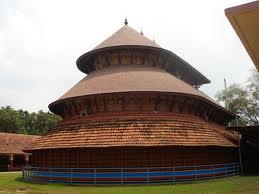
The Thiruvananthapuram city got its name after the name of the lord. The meaning of the word is 'the land of Sree Anantha Padmanabha Swamy'. The Deity and Idol of Sri Padmanabhaswamy
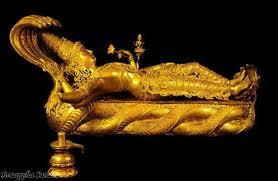
Importance of the Idol
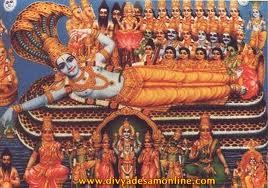
Sreekovil - sanctum sanctorum
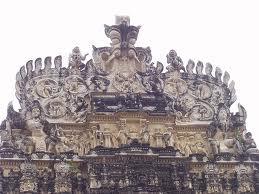
As explained the devotees have to see the face portion from of the Lord through the 1st door. In this portion the lord's eyes (described as Tamara kannugal – lotus petal like eyes) are there which see the entire lives of the living things to make them live and give protection.Poojas Of Sri Padmanabhaswamy Temple
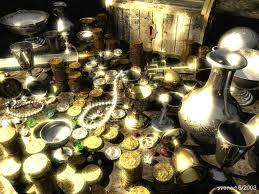
Offerings to the Deity of Sri Padmanabhaswamy
Festivals of Sri Padmanabhaswamy Temple
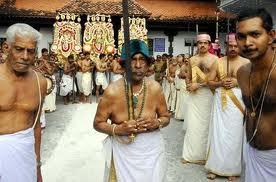
The Usual Annual Ulsavams
1. Kalabham festival is observed from 8th to 14th of January with Makara Seeveli and Perunthiramruthu Pooja is done at 8.30 p m.
2. Painguni Utsavam Aaratu during March – April as explained above 10 days.
3. Vishu – On 14th April Vishu Kani Darshan at 5 am.
4. Kalabham – 11th to 16th July – Karkidaka Seeveli and Perunthiramruthu Pooja.
5. Nira Puthari - July- August Pre harvest festival.
6. Thiruvonam – Ona villu charthu – Ona villu during August – September.
7. Vinayaka Chathurthi – during August – September.
8. Sree Krishna jayanthi – Ashtami Rohini – during August – September.
9. Valiya Ganapthi Homam – 12 days during September – October.
10. Navarathri Festival – 9 days festival during September – October.
11. Aipashi Utsavam - 10th day Aaratu during October – November as explained earlier.
12. Swargavathil Ekadasi during December.Temple Timings & Dress Code
The temple is open between 4.15 am to 5.15 am; 6.45 to 7.30 am; 8.30 to 10.30 am; 11.30 to 11.45 am; and 17.15 to 19.30 pm.
It appears that the above timing is slightly altered to (before noon) 3.30 to 4.45, 6.30-7.00, 8.30-10.00, 10.30-11.00, 11.45-12.00; (afternoon) 5.00-6.15 and 6.45-7.20.Sub shrines in Sri Padmanabhaswamy Temple
Legends about the Temple in this Place
There are two or three legends about the place of the temple. Most of them are connected with the Viluamangalam Swamiyar also known as the Divakara Muni.First Legend
Second Legend
Third Legend
History of Construction
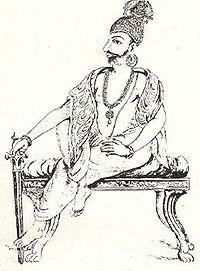 The foundation of the present Gopuram (huge Gate Structure) was laid in 1566. This Gopuram is 100 feet in height with 7 tiers and is in Pandyan (Erstwhile Madurai based kings) Style. The temple was rebuilt in the present form by Raja Marthanda Varma during 1731 to 1733. The temple is repaired, renovated and even some structural changes made up to 18th century. The temple tank Padma Theertham (lotus sacred water spring) is by the side of the temple. The corridor, from east side to the Sree Kovil (sanctum sanctorum), of the temple is built with 365 and one quarter (corresponding to the number of days in a year?) granite pillars with exquisite carvings. The dwajasthamba (flag staff of the temple) is in front of the main entrance the corridor. It is 80 feet in height. The ground floor under the Gopuram is the Nataka Sala (theatre) for staging the temple art of Kathakali; dance etc during the festival season nights.
The foundation of the present Gopuram (huge Gate Structure) was laid in 1566. This Gopuram is 100 feet in height with 7 tiers and is in Pandyan (Erstwhile Madurai based kings) Style. The temple was rebuilt in the present form by Raja Marthanda Varma during 1731 to 1733. The temple is repaired, renovated and even some structural changes made up to 18th century. The temple tank Padma Theertham (lotus sacred water spring) is by the side of the temple. The corridor, from east side to the Sree Kovil (sanctum sanctorum), of the temple is built with 365 and one quarter (corresponding to the number of days in a year?) granite pillars with exquisite carvings. The dwajasthamba (flag staff of the temple) is in front of the main entrance the corridor. It is 80 feet in height. The ground floor under the Gopuram is the Nataka Sala (theatre) for staging the temple art of Kathakali; dance etc during the festival season nights.
Other Temples in Thiruvananthapuram
The Sri Padmanabhaswamy Temple visit can be a part of the Kerala temple tours. The other temples in Thiruvananthapuram are Attukal Devi temple, Sreekanteswaram Temple, Sree Lakshmi Varaha Swamy Temple (Sree Varaham Temple), Pazhavangadi Ganapathi Temple, Vellayani Devi Temple, Hanuman Swamy Temple. It is to be remembered that only Hindus are allowed inside in most of the temples in Kerala.

 Job oriented
Job oriented